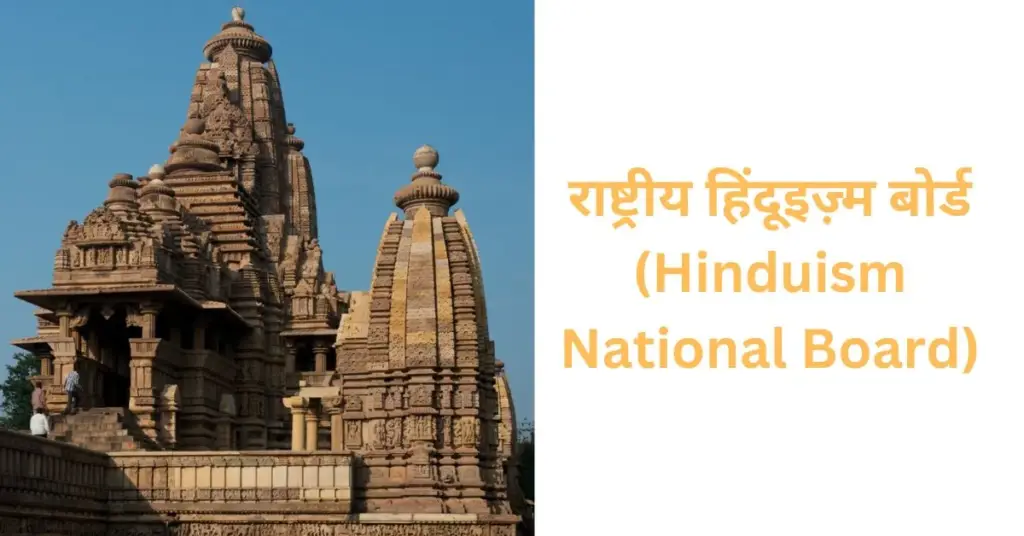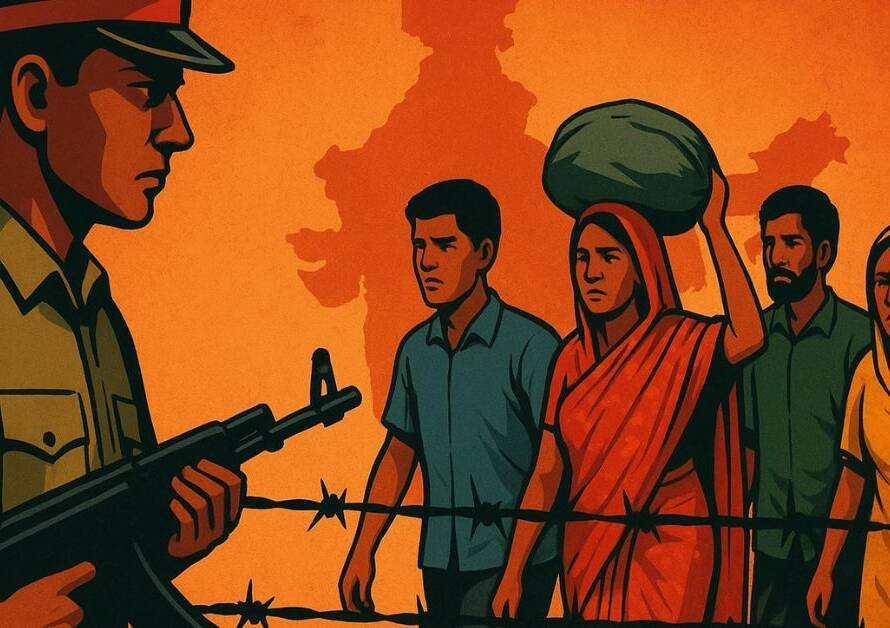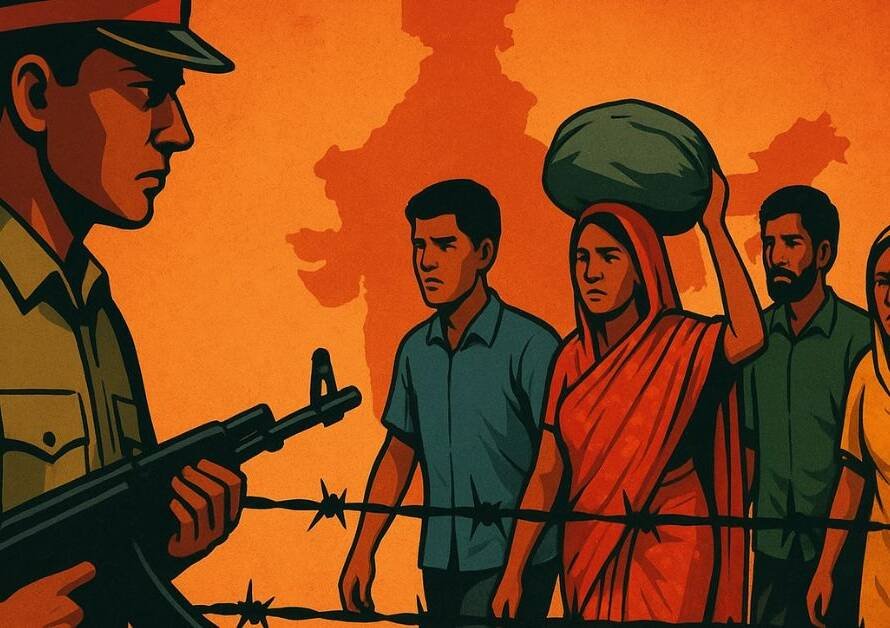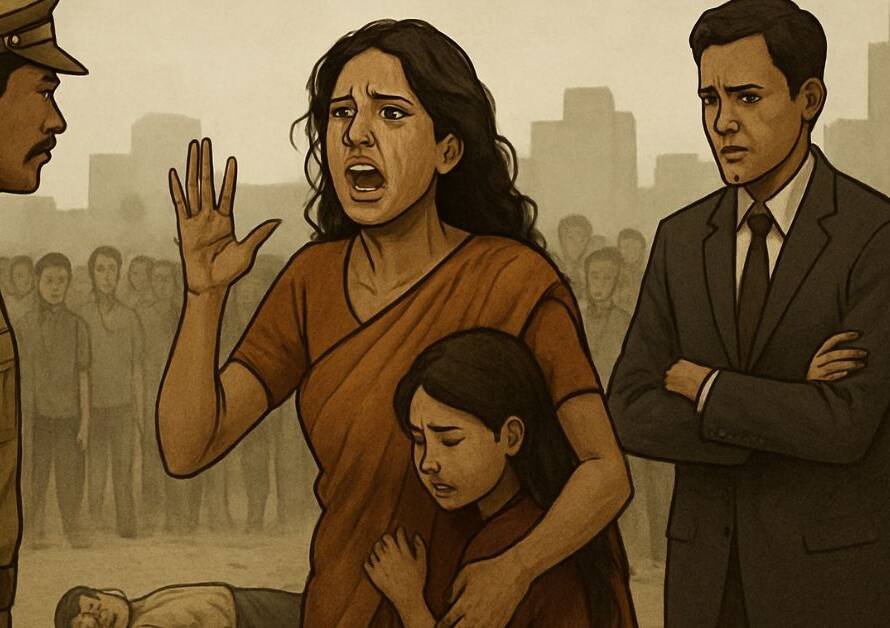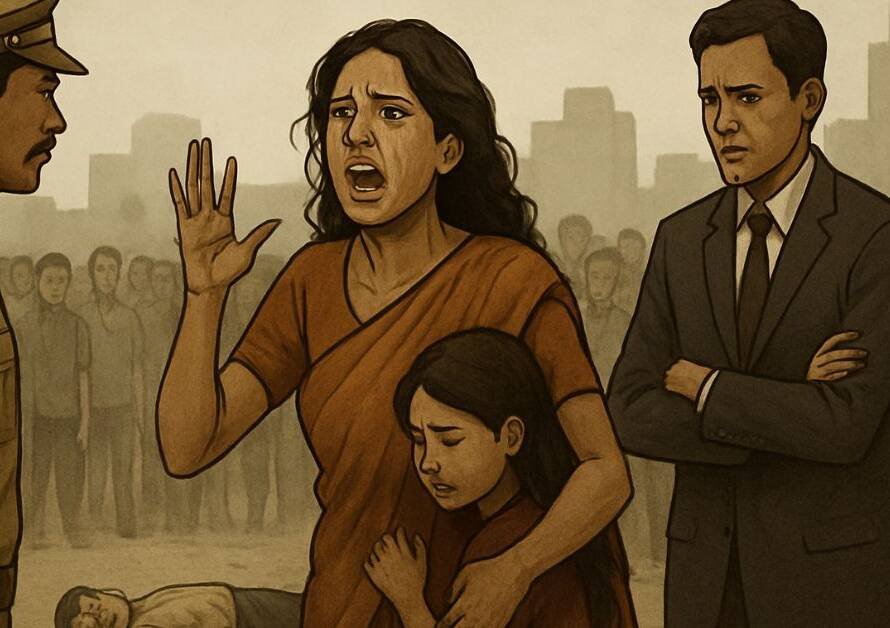Dear Members,
It gives me immense pleasure to announce that today marks the completion of one month since the initiation of our WhatsApp group, and our membership has grown to 442. Many of you are already aware of our core objectives, but I would like to reiterate them for our new members. The primary purpose of this group is to safeguard our religion, culture, and the vision of a Hindu nation, which currently faces threats from opposition forces and external adversaries. These adversaries are well-organized; despite being smaller in number, they have become highly effective. On the other hand, we Hindus, although three times more in number, remain divided by caste, community, and sect, making us less organized and unable to counter their impact effectively. We must unite and confront them as a strong collective force.
In the last ten years, the Modi government has successfully lifted our country out of a severe economic crisis and placed us among developing nations. Our economic growth rate today surpasses that of developed countries, and our country’s standing on the global political stage has become significantly stronger. This is a matter of great pride for us.
Despite this progress, opposition parties and external adversaries are discontent because they are failing to achieve their selfish objectives. Their primary aim is to exploit the country for personal gains, while the external forces seek to turn India into an Islamic nation through appeasement tactics. Therefore, we Hindus must put aside caste, community, and sectarian differences, unite as one, and use our collective strength to thwart these efforts by opposition and adversarial forces.
Only Modi’s team and pro-Hindu organizations like RSS, VHP, and Bajrang Dal can safeguard our Hindu nation and religion. To protect ourselves, our religion, and our nation, we must ensure that the NDA/BJP secures a massive victory in all upcoming state elections and that the governments of opposition parties are removed from all states. This is the only way the Modi team can lead us towards a brighter future. We have no other option.
In the last Lok Sabha election, we did not give the Modi government an absolute majority, which emboldened opposition and external adversaries. They saw this as their victory and intensified their efforts against Hindus. They openly opposed the developmental initiatives of the Modi government. However, the recent results of the Haryana and Jammu & Kashmir assembly elections have curbed their momentum to a significant extent. Now, we must ensure a sweeping victory for the Modi government in all upcoming state and other elections so that these external adversaries and opposition forces become weaker.
We have been receiving many good messages in this group, most of which align with our core objectives. However, there have also been a few unrelated messages. Please refrain from sharing religious, general, or news-related messages here, as there are other groups for that purpose. Such messages distract from our main objectives. Members who repeatedly send unrelated messages may be removed from the group.
I kindly request all members to ensure that before sharing any video, it hasn’t already been posted in the group. If a video lacks any comments or information, please provide a summary after watching it. This will help other members. If you find a good video relevant to our objectives, please include a summary in the comments, as I often do. This will help me include it in my future messages.
Our next step should be to ensure that our message reaches as many people as possible across the country, so they can assist us in achieving our goals. I urge you all to share this message and the link to join the group with your contacts, so we can grow our numbers. Additionally, we need to connect with Hindu religious leaders, gurus, saints, and organizations like RSS/VHP/Bajrang Dal and accelerate our campaign with their support.
This mission cannot succeed without your cooperation. I request all of you to actively participate and help make this campaign successful.
To join this WhatsApp group, please click on this link: https://chat.whatsapp.com/LJq6xikmqbc6WYF6QdUcqU
We are grateful for your support.
Thank you, A Vigilant Hindu Citizen
Jai Hind! Jai Bharat!!
Examples and Case Studies
The following examples and case studies illustrate efforts toward Hindu unity and the safeguarding of religion, culture, and nation, which are seen as facing external threats. These case studies highlight demographic changes, religious-political alliances, and the influence of ideological groups working to protect their beliefs.
- Kashmiri Pandit Exodus (1989-1990)
Example: The exodus of Kashmiri Pandits from the Kashmir Valley in 1989-1990 is a prominent example often cited in the context of religious conflict and demographic changes. Islamic terrorist groups targeted the Hindu Pandit community, forcing nearly 100,000 Kashmiri Pandits to flee the valley. This instance demonstrates how minority Hindu populations can feel vulnerable and be forced to leave their homes under the influence of Islamic extremism. Relevance: It serves as a warning that when political and cultural control is lost, Hindu identity may be erased, leading to forced displacement and a loss of regional identity.
- Communal Incidents in West Bengal (Post-2016)
Example: In recent years, several districts of West Bengal have witnessed communal tensions and violence, particularly in areas where the Muslim population has been rapidly increasing. Clashes occur during religious festivals like Durga Puja or Ram Navami, exacerbating political and religious polarization. The political dynamics in West Bengal, where some parties are accused of minority appeasement, have raised concerns among the Hindu community about demographic changes and the evolving political landscape. Relevance: This highlights fears among Hindus in border states where illegal Bangladeshi migration and political alliances with Muslim communities are seen as threats to Hindu culture and prominence.
- Rohingya Refugee Crisis and Settlement in India
Example: The issue of Rohingya Muslims seeking refuge from Myanmar in India has become a politically sensitive debate, with accusations that they are being settled in areas where their presence could disrupt the demographic balance. In 2018, thousands of Rohingya settled in Jammu, sparking concerns about long-term political and demographic changes in the predominantly Hindu state. Relevance: The Rohingya issue is often cited as an example of how illegal migration and religious identity can create tensions in local communities, potentially affecting Hindu-majority areas.
- Illegal Migration from Bangladesh (Assam and West Bengal)
Example: Assam has been a focal point of the issue of illegal migration from Bangladesh, significantly altering the state’s demographic structure. The National Register of Citizens (NRC) and the Citizenship Amendment Act (CAA) have become major political issues as the government seeks to identify and deport illegal migrants. There is fear that unchecked migration may lead to the decline of local Hindu communities. Relevance: This case study reflects broader concerns that unchecked illegal migration may cause demographic imbalances, leading to political, social, and cultural changes unfavorable to the Hindu community.
- Rise of Islamic Radical Groups in Kerala
Example: Kerala has seen the rising influence of radical Islamic groups like the Popular Front of India (PFI), accused of involvement in communal tensions and extremist activities. In a state with strong Muslim and Christian minority populations, there are increasing concerns among Hindus about efforts toward Islamization. PFI has been accused of recruitment for global jihadist movements and conducting mass conversions. Relevance: The situation in Kerala highlights how radical Islamic groups are influencing local politics, education, and social systems, reshaping the state’s cultural and religious identity by promoting jihadist ideologies.
- Demographic Changes in Western Uttar Pradesh
Example: Districts in Western Uttar Pradesh have seen rapid shifts in demographic patterns, with declining Hindu populations and increasing Muslim populations in many areas. This region has witnessed frequent communal violence during religious festivals. The 2013 Muzaffarnagar riots, which displaced thousands, underscored the tensions between Hindu and Muslim communities in the region. Relevance: Demographic changes in Western Uttar Pradesh represent broader fears of losing political and social control in Hindu-majority areas, potentially leading to increased Muslim population growth and political appeasement.
- Global Example: Concerns Over Muslim Migration in Europe
Example: The rapid increase of Muslim populations from the Middle East and North Africa in Europe has sparked concerns over cultural identity changes and the rise of political Islam. Public debates have emerged in countries like France, Germany, and Sweden about Islamic integration, the emergence of Muslim-majority neighborhoods, and fears of ‘Islamization.’ Terrorist attacks by Islamic extremists in European cities have also fueled anti-Islam and anti-immigration sentiments. Relevance: This global context aligns with concerns expressed in India regarding demographic changes and the rise of political Islam, showing how uncontrolled migration and political appeasement can divide societies and foster violent extremism.
- Terrorism and Jihadist Recruitment in India
Example: India has faced terrorist activities led by Islamic jihadist organizations such as the Indian Mujahideen, Lashkar-e-Taiba, and ISIS-linked groups. These organizations have conducted bombings and attacks in major cities like Mumbai, Delhi, and Bengaluru. They exploit religious tensions, poverty, and discontent to recruit Muslim youth, posing a significant threat to India’s security. Relevance: The rise of jihadist ideologies is linked to concerns about mass radicalization among the Muslim population, where terrorism is used as a tool to intimidate and destabilize Hindus and the Indian state.
Conclusion
The examples and case studies above indicate that Islamic extremism, illegal migration, demographic changes, and political appeasement are viewed as threats by some segments of Hindu society. These issues reflect concerns about the future of Hindu identity, culture, and governance. Groups like the National Hinduism Board aim to defend Hindu interests by addressing these trends through political participation and activism.
Next Steps
To make the National Hinduism Board more effective and organized, several important steps can be taken. Here are some suggestions that can help realize the group’s objectives:
- Expand Membership and Increase Engagement
Increase Membership: Focus on increasing the number of members, especially by involving Hindu youth, religious leaders, educators, and social activists. Encourage them to actively participate in group activities.
Utilize Social Media Platforms: Beyond WhatsApp, expand the group’s presence on Facebook, Instagram, and Twitter. This will allow you to connect with more Hindus at national and international levels.
Outreach Campaign: Assign each member the responsibility to bring at least 5-10 new people into the group. This will help in quickly increasing the membership count.
- Organize Events at Local and National Levels
Local Meetings and Workshops: Conduct meetings and workshops at the local level to expand awareness of the group’s goals and ideology. Emphasize cultural and religious significance and involve more Hindu youth.
Nationwide Campaigns: Launch nationwide campaigns like the ‘United Hindu Nation’ campaign, where people from all communities can participate.
- Collaborate with Religious and Cultural Leaders
Reach Out to Saints and Spiritual Leaders: Connect with prominent saints, spiritual leaders, and religious institutions across the country and involve them in your campaign. Their support can provide religious validation and increase popularity among the masses.
Collaboration with Organizations: Form strategic partnerships with organizations like RSS, VHP, and Bajrang Dal. Their experience and resources can help advance your cause.
- Religious and Social Awareness Campaigns
Promote Religious Education: Educate your members about Hindu religion, culture, and traditions. This will strengthen your ideology and increase religious awareness.
Seva (Service) Initiatives: Enhance the group’s image by participating in social service activities such as blood donation drives, free health camps, and support for orphanages.
- Political Engagement and Mobilization
Political Support: Ensure that group members actively participate in voting and express support for the BJP/NDA, so that a supportive government remains in power.
Engagement in Elections: Actively involve your team in both state and national elections. Encourage all members to vote unitedly for candidates who support nationalism and Hindutva.
- Incorporate Youth Leadership
Youth Leadership Programs: Involve young people in leadership and organizational roles so they can carry forward the mission. Assign them responsibilities such as handling social media, organizing events, and expanding membership.
Training and Education: Conduct workshops on leadership skills, political knowledge, and cultural awareness for youth members.
- Foster Unity Across Castes and Communities
Unite All Castes and Communities: Make special efforts to eliminate caste and sectarian divides to prevent any internal divisions and foster unity among all Hindus.
Celebrate Religious Festivals Together: Organize collective celebrations of religious festivals like Ram Navami, Durga Puja, and Maha Shivaratri across India to promote cultural unity.
- Public Relations and Media Outreach
Media Outreach: Showcase the group’s activities and objectives on media platforms through press releases, news coverage, and blogs to reach a wider audience.
Distribution of Promotional Material: Spread your message widely through magazines, brochures, and other promotional materials.
- Ensure Legal and Political Support
Legal Protection: Create a team of legal advisors to provide legal protection to group members. This will ensure that your actions and efforts have legal backing.
Political Backing: Secure support from various political leaders and pro-Hindu organizations to ensure the group’s stability and protection.
- Increase International Support
Connect with International Hindu Organizations: Reach out to Hindu organizations and spiritual leaders abroad to involve them in your campaign. This will help garner international support and spread your message to a broader audience.
Establish a Global Hindu Solidarity Forum: Create a global platform where Hindu organizations and spiritual leaders from different countries can unite and work together to protect Hindu religion and culture.
By following these suggestions, the National Hinduism Board can emerge as a strong and organized movement that not only protects Hindu religion but also promotes cultural and national unity.

